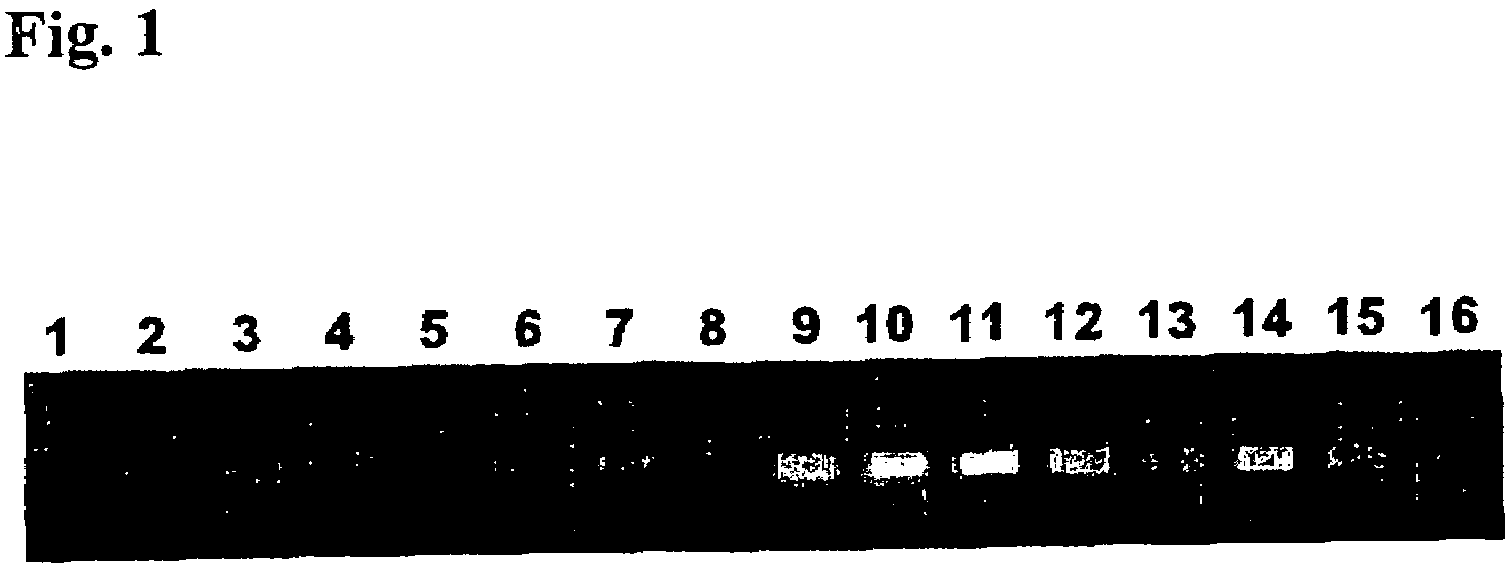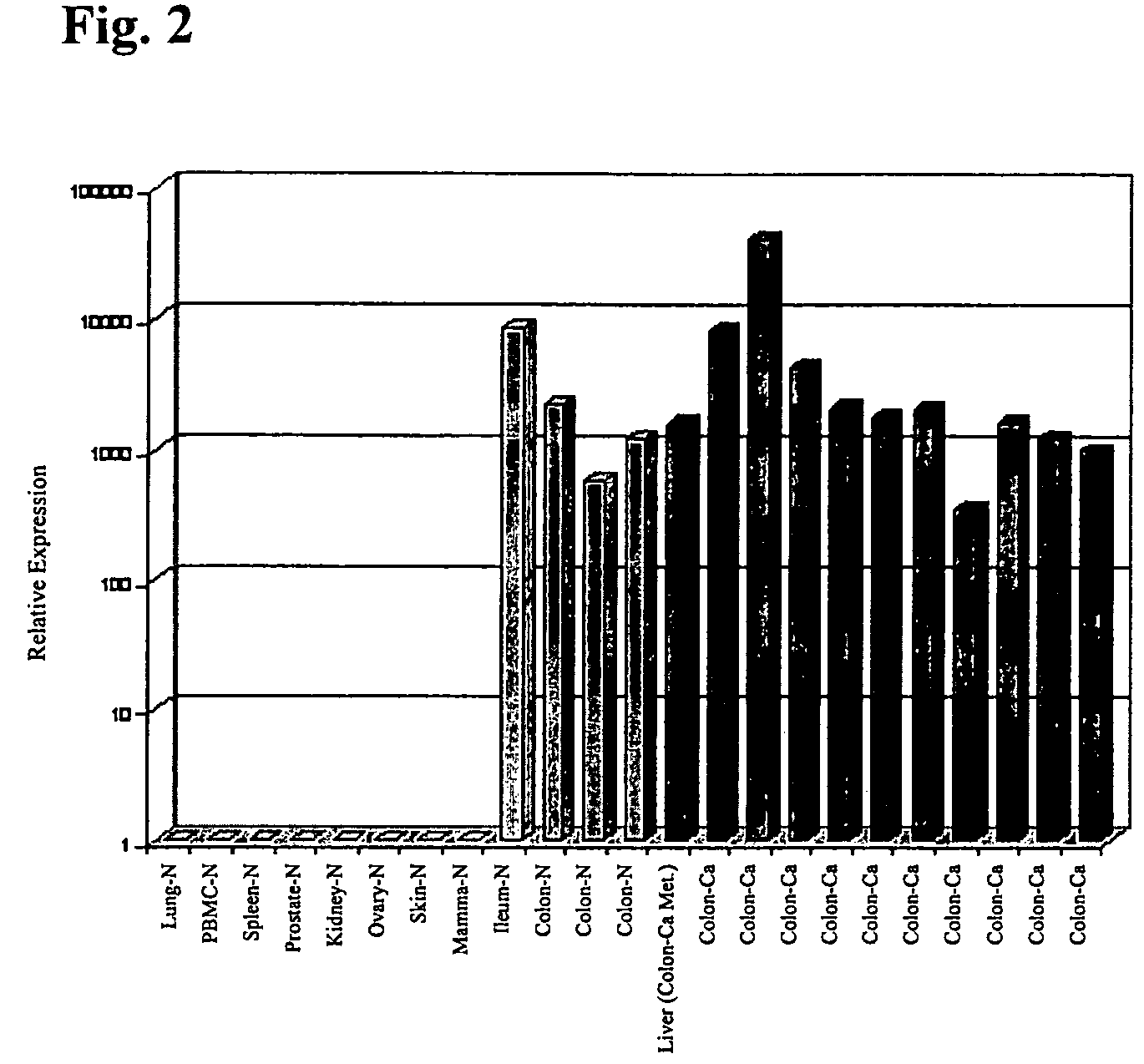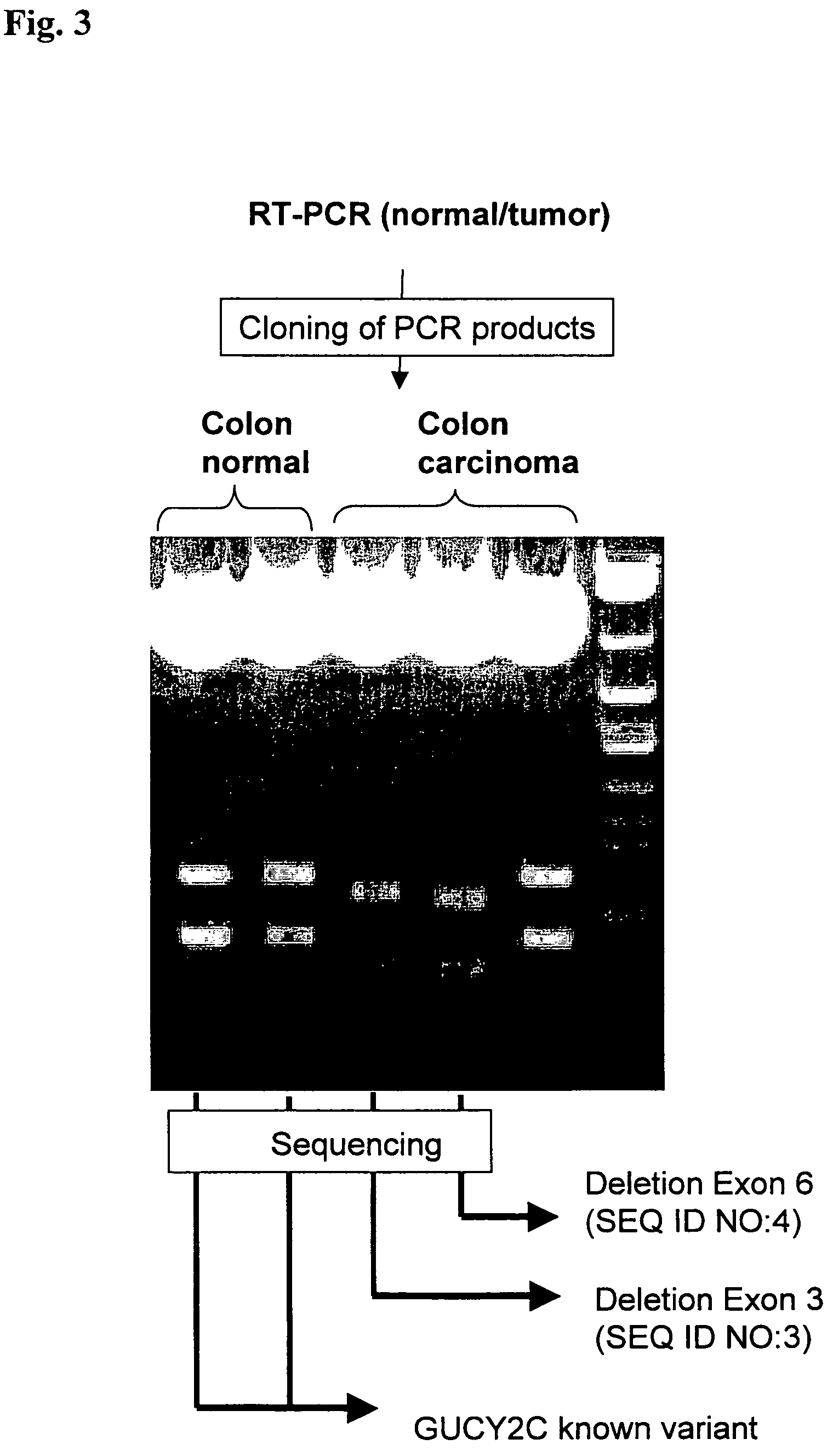Genetic products differentially expressed in tumors and the use thereof
a technology of tumors and gene products, applied in the direction of immunoglobulins, peptides, drugs against animals/humans, etc., can solve the problems of insufficient clinical studies of tumor-associated antigens, inability to rule out the wrong target structure of proteins evoking spontaneous immune responses, and inability to produce solid evidence of real action of previously found and utilized tumor-associated antigens
- Summary
- Abstract
- Description
- Claims
- Application Information
AI Technical Summary
Benefits of technology
Problems solved by technology
Method used
Image
Examples
example 1
Identification of GPR35 as Diagnostic and Therapeutic Cancer Target
[0289]GPR35 (SEQ ID NO:1) and its translation product (SEQ ID NO:9) have been described as putative G protein-coupled receptor. The sequence is published in Genbank under accession No. AF089087. This transcript codes for a protein of 309 amino acids with a molecular weight of 34 kDa. It was predicted that GPR35 belongs to the superfamily of G protein-coupled receptors with 7 transmembrane domains (O'Dowd et al., Genomics 47:310-13, 1998). In order to confirm the predicted localization of GPR35 in the cell, the protein was fused to eGFP as reporter molecule and, after transfection of the appropriate plasmid, expressed heterologously in 293 cells. The localization was then analysed in a fluorescence microscope. It was confirmed according to the invention that GPR35 is an integral transmembrane molecule (FIG. 17). Investigation to date on human GPR35 (see, inter alia, Horikawa Y, Oda N, Cox N J, Li X, Orho-Melander M, H...
example 2
Identification of GUCY2C in Hepatic and Ovarian Tumors and Novel GUCY2C Splice Variants as Diagnostic and Therapeutic Cancer Targets
[0296]Guanylate cyclase 2 C (SEQ ID NO:2; translation product: SEQ ID NO:11)—a type I transmembrane protein—belongs to the family of natriuretic peptide receptors. The sequence is published in Genbank under the accession number NM—004963. Binding of the peptides guanylin and uroguanylin or else heat-stable enterotoxins (STa) increases the intracellular cGMP concentration, thus inducing signal transduction processes inside the cell.
[0297]Recent investigations indicate that expression of GUCY2C also extends to extraintestinal regions such as, for example, primary and metastatic adenocarcinomas of the stomach and of the esophagus (Park et al., Cancer Epidemiol Biomarkers Prev. 11: 739-44, 2002). A splice variant of GUCYC which is found both in normal and transformed tissue of the intestine comprises a 142 bp deletion in exon 1, thus preventing translation ...
example 3
Identification of SCGB3A2 as Diagnostic and therapeutic Cancer Target
[0313]SCGB3A2 (SEQ ID NO:6) (translation product: SEQ ID NO:15) belongs to the secretoglobin gene family. The sequence is published in GenBank under accession number NM—054023. SCGB3A2 (UGRP1) is a homodimeric secretory protein with a size of 17 kDa, which is expressed exclusively in the lung and in the spiracles (Niimi et al., Am J Hum Genet 70:718-25, 2002). RT PCR investigations with a primer pair (SEQ ID NO:37, 38) confirmed selective expression in normal lung tissue. Lung- and trachea-specific genes, e.g. for surfactant proteins, are highly downregulated in malignant tumors during dedifferentiation and are normally undetectable in lung tumors. It was surprisingly found that SCGB3A2 is active in primary and metastatic lung tumors. The investigations according to the invention showed that SCGB3A2 is strongly and frequently expressed in bronchial carcinomas (FIG. 4). All the other 23 normal tissues tested, apart ...
PUM
| Property | Measurement | Unit |
|---|---|---|
| temperatures | aaaaa | aaaaa |
| temperature | aaaaa | aaaaa |
| temperature | aaaaa | aaaaa |
Abstract
Description
Claims
Application Information
 Login to View More
Login to View More - R&D
- Intellectual Property
- Life Sciences
- Materials
- Tech Scout
- Unparalleled Data Quality
- Higher Quality Content
- 60% Fewer Hallucinations
Browse by: Latest US Patents, China's latest patents, Technical Efficacy Thesaurus, Application Domain, Technology Topic, Popular Technical Reports.
© 2025 PatSnap. All rights reserved.Legal|Privacy policy|Modern Slavery Act Transparency Statement|Sitemap|About US| Contact US: help@patsnap.com



